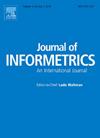西班牙国家研究项目按性别分配资金比例的趋势分析:按学科和工作人员职位进行的研究
IF 3.5
2区 管理学
Q2 COMPUTER SCIENCE, INTERDISCIPLINARY APPLICATIONS
引用次数: 0
摘要
鉴于科研经费在推动知识生产和促进学术界性别平等方面的关键作用,本研究旨在分析不同学科或知识领域和研究人员类别在资金分配方面的性别差异。我们分析了2015年至2022年期间授予的20,843项西班牙补助金的数据,并将这些记录与终身研究人员的数据进行了匹配。考虑到在科学系统中,女性代表着较低的劳动力,我们分析了相对于她们担任副教授和正教授的比例。为了量化这些差异,我们采用了性别比例基金和男女比例。这一方法用于分析授予的赠款数额是否与他们作为终身工作人员的存在成比例。我们的研究结果显示,在拨款分配和终身教职人员方面存在显著差异,女性获得的拨款约占33%,副教授和正教授分别占43%和38%。这种差异在知识领域方面更大,工程和建筑的男女比例最低,而艺术和人文学科的男女比例最高。这种模式在工程和建筑专业有着明显差异的副教授和正教授之间重复出现。尽管如此,纵向分析表明,差异随着时间的推移而减少,在工作人员类别和不同知识领域都显示出积极的趋势。在比例方面,我们观察到,授予女性的补助金比例与她们作为终身教职员工的代表性一致,到2022年达到最高值。在诸如工程和建筑等妇女获得较少的补助金和较少的副教授和正教授的领域,授予妇女的补助金比例与男性相似。尽管我们的研究结果显示出有利于女性的积极趋势,但还需要采取更多的行动。未来的研究可以探索资助分配、生产力和协作角色如何相互作用,以加深对研究资助中的性别动态的理解。本文章由计算机程序翻译,如有差异,请以英文原文为准。
Trend analysis of the proportional allocation of funding by gender in Spanish National Research Projects: A study by disciplines and staff positions
Given the critical role of research funding in driving knowledge production and promoting gender parity in academia, this study aimed to analyze gender differences in funding allocation over time across different disciplines or areas of knowledge and research staff categories. We analyzed data from 20,843 Spanish grants awarded between 2015 and 2022, matching these records with data on tenured research staff. Considering that in scientific systems, women represent a lower workforce, we analyzed the proportion of grants awarded relative to their presence as associate and full professors. To quantify these differences, we employed proportional gender funding and the women/men ratio. This approach was used to analyze whether the amount of grants awarded was proportional to their presence as tenured staff members. Our findings reveal significant disparities in grant allocation and tenured staff, with women receiving approximately 33% of the grants and representing 43% and 38% of associate and full professors, respectively. This difference was higher in terms of areas of knowledge, with Engineering and Architecture having the lowest women/men ratio and Arts and Humanities having the highest ratio. This pattern was repeated among associate and full professors with pronounced differences in Engineering and Architecture. Despite this, the longitudinal analysis showed that the differences decreased over time, showing a positive trend for both staff categories and across different areas of knowledge. Regarding proportionality, we observed that the proportion of grants awarded to women agreed with their representation as tenured staff, reaching its highest value by 2022. In areas where women received fewer grants and were fewer associate and full professors, such as Engineering and Architecture, the proportion of grants awarded to women was similar to that of men. Although our findings indicate a positive trend favoring women, more action needs to be taken. Future research could explore how grant allocations, productivity, and collaborative roles interact to deepen the understanding of gender dynamics in research funding.
求助全文
通过发布文献求助,成功后即可免费获取论文全文。
去求助
来源期刊

Journal of Informetrics
Social Sciences-Library and Information Sciences
CiteScore
6.40
自引率
16.20%
发文量
95
期刊介绍:
Journal of Informetrics (JOI) publishes rigorous high-quality research on quantitative aspects of information science. The main focus of the journal is on topics in bibliometrics, scientometrics, webometrics, patentometrics, altmetrics and research evaluation. Contributions studying informetric problems using methods from other quantitative fields, such as mathematics, statistics, computer science, economics and econometrics, and network science, are especially encouraged. JOI publishes both theoretical and empirical work. In general, case studies, for instance a bibliometric analysis focusing on a specific research field or a specific country, are not considered suitable for publication in JOI, unless they contain innovative methodological elements.
 求助内容:
求助内容: 应助结果提醒方式:
应助结果提醒方式:


